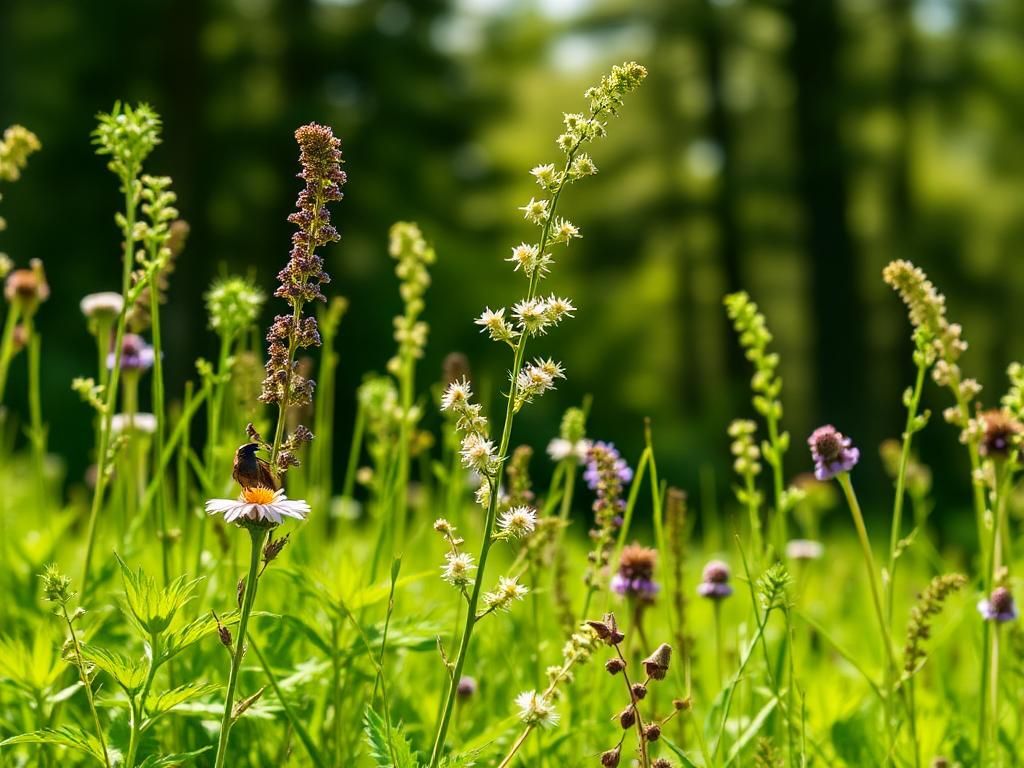Wild medicinal herbs have been an integral part of human health and wellness for thousands of years. These plants, often found in the wild, carry a wealth of compounds that can support various aspects of health and healing. Herbal medicine holds significance across various cultures, from Ayurveda in India to Traditional Chinese Medicine. In recent years, there has been a resurgence of interest in natural remedies, as people seek alternatives to synthetic medicines. Let’s delve deeper into the fascinating world of wild medicinal herbs.
Historical Context
Ancient Use of Medicinal Plants
The use of wild medicinal herbs can be traced back to ancient civilizations. Different cultures have their unique approaches to herbal medicine. For instance, Ayurveda, one of the world’s oldest medicinal systems, utilizes numerous herbs for balancing the body’s energies. Meanwhile, Traditional Chinese Medicine integrates herbs like ginseng and ginger, emphasizing holistic health. Historical texts, such as Dioscorides’ “De Materia Medica,” illustrate the medicinal properties of plants, laying the foundation for modern herbalism.
Evolution of Herbal Medicine
Over the centuries, there has been a significant shift in how we perceive and utilize wild medicinal herbs. Initially rooted in tradition, herbal practices evolved as they intertwine with modern healthcare approaches. Folk knowledge has played a critical role in maintaining regional variations, promoting the use of local herbs for local ailments. This blend of old wisdom and new science continues to enrich our understanding of herbal remedies today.
Identification of Common Wild Medicinal Herbs
Key Characteristics to Identify Wild Herbs
Identifying wild medicinal herbs can be a rewarding endeavor. The key characteristics often include leaf shape, flower structure, and growth habitat. For instance, Stinging Nettle features serrated leaves and tiny white flowers and thrives in moist areas. Additionally, understanding seasonal variations is crucial for timing your harvest to ensure the best potency of the herbs.
List of Common Wild Medicinal Herbs
Here are some of the most beneficial and commonly found wild medicinal herbs:
| Herb Name | Uses | Identification Tips |
|---|---|---|
| Stinging Nettle | Anti-inflammatory, nutrition-rich | Serrated leaves, green stems, grows in moist areas |
| Dandelion | Detoxification, liver support | Bright yellow flowers, jagged leaves, grows in yards |
| Echinacea | Immune support, anti-viral properties | Purple petals, spiky center, commonly found in prairies |
| Chamomile | Calming effects, digestive aid | Small white flowers with yellow centers, sweet scent |

Benefits of Using Wild Medicinal Herbs
Nutritional Value
Incorporating wild medicinal herbs into your diet provides substantial nutritional benefits. Many of these herbs are rich in vitamins A, C, K, and minerals like iron and calcium. Regular consumption of herbs can enhance your daily nutrition, supporting overall health and well-being.
Therapeutic Benefits
The therapeutic potentials of wild medicinal herbs are vast. They can provide natural remedies for common ailments such as colds and inflammation. For instance, Chamomile can soothe digestive issues, while Echinacea is known for its immune-boosting abilities. Embracing herbal medicine can pave the way for preventive health, reducing the dependency on pharmaceuticals.
Foraging for Wild Medicinal Herbs
Ethical and Sustainable Foraging Practices
For those interested in gathering wild medicinal herbs, it’s essential to adopt ethical and sustainable foraging practices. Respecting ecosystems and understanding the importance of biodiversity helps preserve nature’s balance. It’s crucial to follow guidelines for sustainable harvesting, ensuring plants can thrive and regenerate.
Tools and Techniques for Foraging
Equipping yourself with the right tools can enhance your foraging experience. Essential tools include field guides to help identify plants, scissors or small shears for cutting herbs, and baskets for collecting them. Techniques such as observing the environment and noting plant habits can ensure safe and effective foraging.
Preparation and Use of Wild Medicinal Herbs
Different Methods of Preparation
Once you’ve sourced your wild medicinal herbs, preparation methods vary. Common techniques include infusions (steeping herbs in hot water), decoctions (boiling harder plant parts), tinctures (alcohol extractions), and poultices (fresh herbs applied directly to the skin). Here’s a basic recipe for an herbal infusion:
- Take 1-2 teaspoons of dried herbs (like Chamomile).
- Add to a cup of boiling water.
- Cover and steep for 5-10 minutes.
- Strain and enjoy your herbal tea!
Dosage and Safety
Understanding appropriate dosages is crucial when using wild medicinal herbs. It’s wise to start small to gauge your body’s reaction. Additionally, potential side effects and contraindications must be considered, particularly for individuals on medications. Always consult a healthcare professional if unsure.
Case Studies and Anecdotal Evidence
Successful Uses of Wild Medicinal Herbs
Numerous testimonials and case studies attest to the efficacy of wild medicinal herbs. From individuals using Echinacea to fend off colds to communities practicing traditional herbal remedies, evidence supports their historical and current value. Studies, like those published in the Journal of Ethnopharmacology, have shown that specific herbs can aid in healing and prevention.
Challenges in Acceptance
Despite the positive recognition, societal skepticism and stigma often surround wild medicinal herbs. Bridging the gap between traditional and conventional medicine is vital. Acknowledging the benefits of herbal medicine while integrating it into modern health systems can help overcome preconceived notions.
Conclusion
The world of wild medicinal herbs holds timeless relevance, offering an abundance of health benefits and a deeper connection to nature. By exploring and respecting these offerings, individuals can embrace a holistic approach to wellness. Whether through foraging, preparation, or herbal education, the journey into the realm of wild herbs is both enriching and rewarding.
Frequently Asked Questions (FAQ)
1. What are wild medicinal herbs?
Wild medicinal herbs are plants found in natural environments, known for their therapeutic properties and historical use in various cultures for healing.
2. How do I identify wild medicinal herbs?
Key characteristics include leaf shape, flower structure, and growth habitat. Consulting a field guide can also assist in the identification process.
3. Can wild herbs be used safely at home?
Yes, but it’s essential to understand proper dosages and preparation methods, as well as to research any potential side effects.
4. What is the best time of year for foraging wild herbs?
Foraging is best done in spring and summer when most herbs are in bloom, although some can be gathered year-round.
5. Are there any risks associated with foraging?
Yes, risks include misidentifying plants, which can lead to toxicity or allergic reactions. Proper education is crucial.
6. What’s the difference between wild medicinal herbs and cultivated herbs?
Wild herbs are sourced from their natural habitats, often containing higher levels of active compounds, while cultivated herbs may have standardized usage and growth conditions.
7. How can I prepare wild herbs for consumption?
Methods include infusions, decoctions, tinctures, or poultices, depending on the herb and its intended use.
8. Which wild herbs are considered the most beneficial?
Common beneficial herbs include Stinging Nettle for anti-inflammatory properties and Dandelion for liver support.
9. Can herbal remedies replace conventional medicines?
While many herbal remedies can complement conventional treatments, they should not replace prescribed medications without professional guidance.
10. Where can I learn more about wild medicinal herbs?
Books like “The Herbal Medicine-Maker’s Handbook” by James Green and websites like the American Herbalists Guild provide valuable information on herbal education and practices.
References
1. American Herbalists Guild – [Visit Here](https://www.americanherbalistsguild.com)
2. Journal of Ethnopharmacology – Visit [here](https://www.journals.elsevier.com/journal-of-ethnopharmacology) for research studies on herbal medicine.







